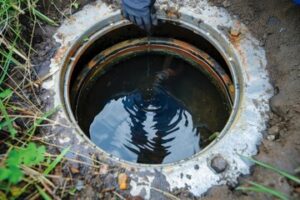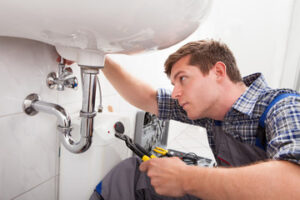Concrete contractors play an essential role in construction projects by transforming raw construction materials into strong, durable, and long-lasting structures. Choosing the right contractor can make all the difference in a project’s success.

When selecting a concrete contractor, consider the following factors. Ask potential contractors for a list of references and contact them to assess their work. Contact Concrete Contractor Columbus for professional help.
Many concrete contractors learn their skills through hands-on experience, working as apprentices for a concrete construction company or attending a trade school program. Others acquire their skills through self-study by reading industry publications, attending workshops, or networking with other professionals. It’s important that concrete contractors continue to grow their knowledge of the industry and develop their skills, especially as new materials and techniques are introduced.
A concrete contractor with years of experience will be able to provide you with high-quality work at an affordable price. They can also offer you tips and tricks that you can use to improve the quality of your own concrete projects. In addition, they will be able to address any concerns you might have regarding your project’s timeline and budget.
When interviewing potential concrete contractors, ask them to provide you with a portfolio of their previous work. Focus on projects that are similar to yours, and pay attention to their attention to detail and the quality of the craftsmanship. Make sure to also ask about their estimated timelines and downpayment requirements.
In addition to their technical expertise, a reputable concrete contractor will prioritize safety during construction. This will ensure that all workers are protected and that your property is secure. Inquire about their safety protocols and what type of equipment they use to reduce the risk of accidents during construction.
It’s also a good idea to ask the concrete contractor about their preferred material suppliers. Find out what brands they prefer and why, as this can impact the durability and longevity of your concrete project. Also, inquire about their concrete mix design and whether they incorporate any additional features to enhance the aesthetics or functionality of your project.
A knowledgeable and friendly residential concrete contractor will be able to answer all of your questions thoroughly and in a clear manner. They will be able to explain technical details in a way that’s easy to understand, and they will keep you informed about your project’s progress throughout its duration. Ask the concrete contractor how they communicate with clients and what their process is for addressing any issues that may arise during the project.
License
Concrete is a common construction material, but working with it requires expertise and dedication. Professional concrete contractors understand how to properly mix, pour, and form concrete for a variety of projects. Their attention to detail ensures that concrete work looks its best and stands up to the test of time. They also know how to install concrete slabs, driveways, and parking lots with precision and stability.
A license from a local contractor’s board is a good way to check the quality of a concrete contractor. A license shows that the contractor has passed a state exam and met all of the requirements for a particular trade. This can help clients feel confident in hiring the contractor for their project. A licensed contractor is also more likely to have the insurance necessary for a construction project.
In addition to passing a state exam, prospective concrete contractors must meet other requirements to obtain their licenses. These may include paying licensing fees and submitting financial documentation. Applicants can also improve their chances of passing the exam by taking preparatory courses and joining study groups with other candidates.
Once a concrete contractor has completed the necessary steps to become licensed, they can begin bidding on projects and growing their business. They can also use their license to expand their network and build trust with potential clients. Having a license can help a concrete contractor build a strong reputation in the industry and increase their chances of getting repeat business.
Choosing a concrete contractor is a crucial decision for any construction project. A qualified concrete contractor can save you a lot of time and money by working efficiently and avoiding mistakes that could be costly. When choosing a concrete contractor, make sure they are licensed and insured to ensure the safety of your project. In addition, they should have a strong record of customer satisfaction and be willing to provide references for past work. Additionally, they should be licensed in your state and be registered with the local tax agency. They should also carry liability insurance that covers property damage, bodily injury, and personal injury claims arising from the performance of their services.
Insurance
As a vital part of construction projects, concrete contractors are involved in tasks with tiny margins for error. They must also juggle multiple tasks while adhering to tight deadlines and strict specifications. With such a demanding job comes high liability risk, so it is crucial for concrete contractors to have adequate insurance coverage. The right insurance provider can protect concrete contractors from costly claims, lawsuits, and property damage.
Prioritize Contractors with Proven Experience and Credentials
Look for a concrete contractor with a valid license, a strong portfolio of past work, and reliable references. Detailed quotes and contracts can help you determine the concrete contractor’s reliability, affordability, and quality of work. It’s also important to make sure the contractor carries the appropriate business insurance. For example, a concrete contractor must carry workers’ compensation, general liability, and automobile insurance.
Examine Their Portfolio and References
Look at the concrete contractor’s portfolio and talk to previous clients to learn more about their experience. This can give you a good idea of the contractor’s capabilities and whether they will complete the project on time and within budget. In addition, it’s a good idea to assess the contractor’s safety practices. Ask about their protocols for excavation and other operations that may require digging. In addition, inquire about their safety measures to ensure that employees are protected from injury or illness while working on-site.
Detailed Quotes and Contracts
Ensure that you are clear on the concrete contractor’s pricing structure and terms before hiring them. It’s best to have all of the details spelled out in writing to avoid any confusion or misunderstandings. Also, ask about the contractor’s payment terms and schedule to ensure that you are comfortable with their financial stability.
Insure Your Equipment
Concrete contractors rely on heavy machinery like mixers and power tools to do their jobs. These machines can be expensive to repair or replace if they are damaged or stolen. Equipment insurance, or inland marine insurance, covers the cost of repair and replacement so that you can continue operations as normal. It’s also a good idea to carry worker’s compensation, commercial auto, and business owner’s policy (BOP) insurance.
Warranty
When hiring a Concrete Contractor, you should always request a contract agreement before work begins. This document will establish project details, timelines, costs, warranties, and terms of service. A contract will protect your interests and help you avoid costly mistakes by establishing clear expectations for both parties. It is also a good idea to ask about how the contractor handles disputes or concerns, as this can give you an indication of their professionalism and willingness to resolve issues amicably.
Whether you are looking for a Concrete Contractor to pour a foundation, remodel your driveway, or repair an existing slab, you want to make sure that the company offers a long-term warranty on their workmanship. A strong warranty shows that the company is confident in the quality of their work and will be around to address any problems that may arise down the road. A good warranty should cover both structural and cosmetic defects.
Inquire about any additional services that the contractor offers, such as hauling, backfill, and clean-up. Some contractors offer these services for an additional cost, while others include them in the initial quote. Asking about these services will help you determine which contractor is best for your project.
It is also a good idea to ask the Concrete Contractor about their experience and previous projects. Speaking with past clients can provide insights into the contractor’s level of professionalism and customer satisfaction. You can also look up online reviews and ratings for further information about the contractor’s reputation.
A good Concrete Contractor will ensure that all aspects of your project are completed to your satisfaction and will do everything they can to meet deadlines. They will be honest with you about any challenges that might arise during the project and will work efficiently to overcome them.
While it is natural for concrete to crack over time, major cracks are not normal and should be repaired by the Concrete Contractor. Other factors that can cause cracks include changes in soil conditions, frost heave effects, and shrinkage. Contact the Concrete Contractor within 90 days of discovering any major cracks or other concerns to preserve your limited warranty.


